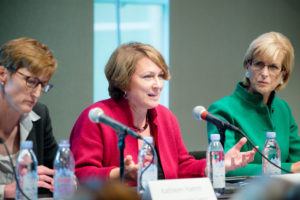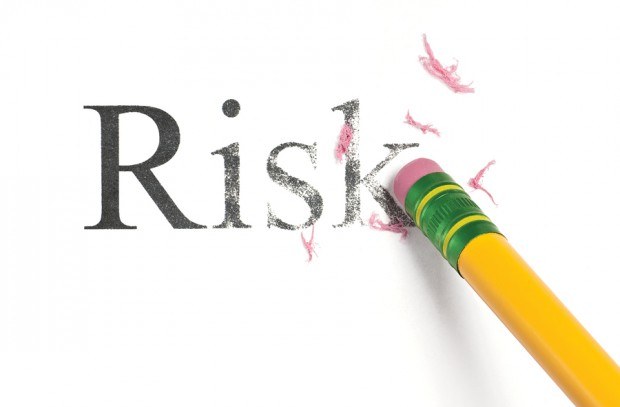Panelists at a New York event hosted last week by Lloyd’s, the world’s specialist insurance market, and the American Security Project, a nonpartisan national security think-tank, urged the insurance industry to plan ahead and work to better understand how to invest in risk prevention as well as risk management in the wake of an increasing shift toward intangible risks.
“The risk landscape is changing,” said Lloyd’s CEO Inga Beale during the panel discussion. “I know that for Lloyd’s, we used to focus so much on tangible risks. It was all about some property or physical thing being damaged, whether by fire, explosion or natural catastrophe. Now, our world is so much more about intangible risk.”

Many of the intangible risks the insurance industry needs to be aware of relate to digitalization, globalization and urbanization, she explained. In the past several years, the world has undergone a “digital revolution,” she stated, leading to the creation of more unstructured data that the insurance industry is still learning to understand and analyze. This has fueled globalization, she added, as everything becomes increasingly connected through technology, as well as urbanization, as assets and people become more concentrated.
“You can see the impact of this in supply chains,” she said. “Something can be happening in one part of the world and impact something else that is happening on the other side of the world. The world is globalized and connected like we’ve never seen. We need to be very committed to thinking about how to help support resilience.”
However, one challenge today in terms of managing and preventing risks is cost, said panelist Christine Todd Whitman, former governor of New Jersey and former administrator of the Environmental Protection Agency (EPA).
“One of the biggest problems is trying to get people to understand cost avoidance,” she said. “Everyone wants to say, ‘What is it costing right now? What is the benefit today?’ Rather than saying, ‘If we invest in this activity now, this is preventing a big price tag down the road that we almost inevitably know is going to occur.'”
Beale pointed to examples of past hurricane damage to explain the challenges the insurance industry faces in terms of the cost associated with taking on risk. She stated that in the 1960s during Hurricane Betsy, the insurance sector paid approximately 80-90 percent of the cost.
“Fast forward every decade, and the percentage insurance institutions paid for each one of these disasters reduced all the way to Hurricane Sandy, when it was about 20 percent,” she said. “The insurance sector has been saying, ‘We can’t provide this product at the right price for the client.’ Or, ‘We don’t want to take the risk.’ But as an insurance sector, we have a responsibility to take on these risks.”
Now, some insurers are providing solutions for less than 10 percent of the risk they face, she added.
“It should be 90 percent,” she said.
As risks become increasingly intangible due largely to advances in technology, the insurance industry should be investing not only in risk management but risk prevention, panelists stated.
“Insurance companies are incredibly good at evaluating and understanding risk, but it has taken a long time since the roots of the insurance industry before insurance companies became any good at preventing risk,” said Ommeed Sathe, vice president of impact investments at Prudential, during the panel discussion. “The question for insurance carriers isn’t necessarily how to predict risk but how to continue to manage it—to have the capacity to understand how to invest in both risk management and prevention.”
To do this, Beale stated the industry needs to take a collaborative approach in deciding how to move forward.
“We need to harness the best minds and economic leverage we have to start doing the progressive, proactive planning that needs to be done to address these issues,” she said.
In terms of cyber risk, as one example, panelist Kathleen Hamm, counselor to the deputy secretary at the U.S. Department of the Treasury, stated that the U.S. Department of the Treasury is encouraging collaboration and education by pushing the finance industry and regulators to develop and use a common lexicon around cybersecurity and resilience. Its aim is to ensure the industry, regulators and stakeholders are using common language to discuss cyber risk.
“We’re encouraging the private sector and regulators to develop and adopt a common risk-based approach to respond to cyber threats,” she said. “In what is arguably the most important element, we’re also encouraging a dynamic process of continuous learning through which entities systematically re-evaluate cybersecurity strategies and frameworks based on lessons learned from changes to operational controls and the threat environment.”





















 Executives on the Move at Liberty Mutual, Cowbell, W. R. Berkley
Executives on the Move at Liberty Mutual, Cowbell, W. R. Berkley  Why ‘Good Enough’ Is Killing Insurance: The Hidden Cost of Satisficing
Why ‘Good Enough’ Is Killing Insurance: The Hidden Cost of Satisficing  Is the AI Boom a Bubble Waiting to Pop? Here’s What History Says
Is the AI Boom a Bubble Waiting to Pop? Here’s What History Says  Nearly Half of 100 Largest P/C Insurers Destroy Value: ACORD
Nearly Half of 100 Largest P/C Insurers Destroy Value: ACORD 





